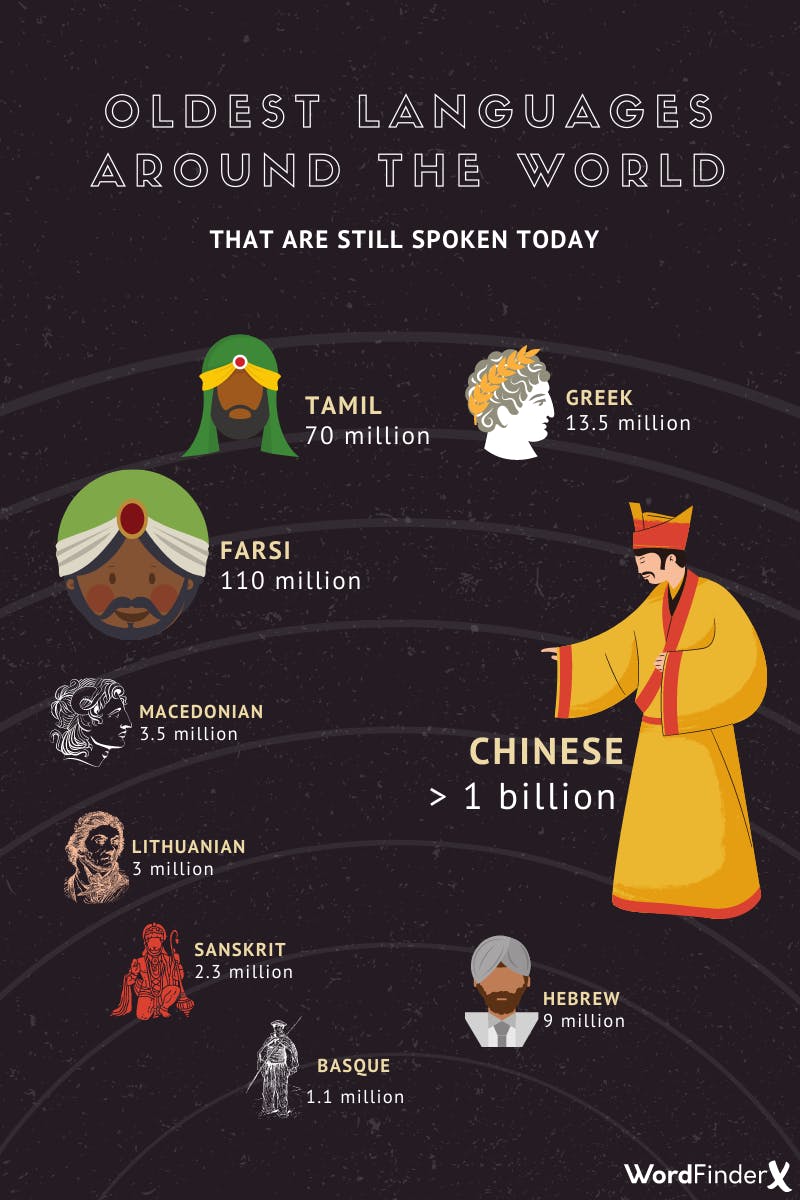The Oldest Languages In The World That Are Still Spoken Today

Language is the most essential tool for communication we have. From exploring new cultures to doing business and trading, language has been bringing people together for thousands of years. According to Ethnologue, there are roughly 7,097 languages used today; however, only 23 major languages are spoken by 50% of the world's population.
Human language is said to have developed 100,000 years ago, and with so many branches from a tonne of different civilisations, some have survived the test of time. Let's take a look at some of the oldest languages still used today!
Tamil
Tamil is recognized as one of the oldest languages in the world and is said to have had a presence around 2,300 years ago. Tamil is a Dravidian language and is mainly spoken in the Tamil Nadu and Puducherry states of India.
The language is also spoken in parts of Sri Lanka and by many people in Singapore and Malaysia. The main script of Tamil is known as 'Brahmi', and it has influenced most Indian scripts, and certainly all Dravidian.
Greek
Greek is the official language of both Greece and Cyprus, spoken by over 15 million people. It was first spoken in Greece and Asia Minor, now a part of modern Turkey, and has been around since the 3rd millennium BC.
The earliest written evidence of Greek dates back to 1450 and 1350 BC, making Greek one of the world's oldest recorded languages.
Lithuanian
Lithuanian comes from the Indo-European language group, which is the ancient origin of so many languages around the world, including; English, Spanish, French, German, and more.
Lithuanian is closely related to Latin, Greek, and the Sanskrit languages, retaining similar sounds and grammar rules, making it one of the world's oldest languages. Today, the language is spoken in Lithuania and is an official language of the European Union.
Hebrew
Ancient Hebrew dates back to around 1200 to 586 BCE. Although Ancient Hebrew left common usage in roughly 400 CE, it's now preserved as a religious and cultural language for the Jewish population.
With the concept of Zionism becoming popular in the 19th and 20th century, a new, Modern Hebrew developed and became the official language of Israel. Today it is spoken by over 9 million people, although it differs quite a bit from Ancient Hebrew.
Sanskrit
Sanskrit is closely related to many modern Indian languages but is much older. It is often considered the oldest language in the world developed around 1750 – 1200 BCE, and falling out of common usage in 600 B.C.
It is now a religious language in the scriptures of Jainism, Hinduism, and Buddhism. Despite this, there has been a revival in recent years in small regions in Nepal and Northern India and is now a spoken language by over 2 million people.
Farsi
Farsi is a commonly spoken language in modern-day Tajikistan, Iran, and Afghanistan, but has ancient roots. The Farsi language is a descendant of Old Persian, which was the official language of the Persian Empire.
Old Persian developed around 400–300 BCE, and Farsi shortly followed. However, a Farsi language user will find that Old Persian is fairly intelligible, and can be understood quite well.
Macedonian
Macedonian is a language derived from the Balto-Slavic family group and is spoken today by over 3.5 million people, mainly in the country of North Macedonia.
Macedonian was influenced heavily by Greek, and it's neighbouring languages, as well as alphabet influence from Cyrillic. It's a bit of a debated topic, but Macedonian certainly has its roots in the 11th century, potentially even further back.
Basque
The Basque language is known as a language isolate, which means it is not directly related to any other language in the world. As you would expect, that means Basque has incredibly ancient roots.
With over 1.1 millions speakers, Basque is spoken in the southern parts of France, and in the northern region of The Basque Country in Spain. Its history is often disputed, but it's fair to say the Basque language has been around since at least the 1st century BCE.
Chinese
Chinese is the biggest natively spoken language in the world, with over 1 billion speakers, and a few million secondary speakers. Chinese belongs to the Sino-Tibetan group of languages and has many different and complex dialects.
Chinese characters, in particular, can be traced back to the Shang Dynasty between the 16th and 11th century BC. In 1995, the writing system was simplified, but still shares many characteristics of modern Chinese.
Language Education Resources:
- 75+ Examples of Idioms for Kids
- Figurative Language
- Metaphor Examples
- Allusion
- A Guide to Personification
- Personification for Kids
- Alliteration
- Simile
- Assonance
- Onomatopoeia
- Hyperbole
- Consonance
- Nouns: A Complete Guide With Examples
- All You Need To Know About Verbs - With Examples
- Parts Of Speech
- Punctuation Inside or Outside Quotation Marks
